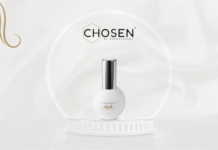Due to genetic conditions, we divide the skin into certain types. They depend on the active sebaceous and sweat glands, age, changes with age and the degree of skin hydration. Proper recognition of what skin we have will allow us to properly care for and extend its vitality. The basic types of skin are: combination, oily, dry and normal skin, as well as their combinations. Special types are also mature and sensitive skin with dilated capillaries ( capillaries ).
Contents
How to recognize what type of skin we have?
The most important thing is observation. The skin reacts in different ways to any substances applied, such as bath soap, cream, lotion, mask, etc. Also, pay attention to how it is influenced by the weather. The skin is unlikely to like wind, sun, frost or very dry air.
I will describe in detail the different skin types, on this basis it will be easier for you to determine which type belongs to you. However, if you still do not know which skin type you have, you can always visit a doctor or beautician. They will conduct a very detailed interview and a tactile and visual analysis that will surely find the answer.
Normal skin:
It is a skin in perfect condition, taut and elastic. It gives the impression of a dull complexion because there is no excess sebaceous secretion. It is smooth and properly moisturized, soft and well supplied with blood. Unfortunately, children who are lucky to have such a complexion are usually children up to the puberty period. During puberty, it usually turns into oily skin in adolescents. Few people can only enjoy such a complexion until the age of 30-35. This type of skin perfectly cares for itself. However, in order for it to remain in such a state as long as possible, we should also protect it from external factors by performing daily care.
Oily (seborrheic) skin:
It is most common in young people entering the period of sexual maturation (around 12 years of age). In this complexion, there is an excessive expansion of the sebaceous glands, which is caused by hormonal changes in the puberty period. It is characterized by luminosity and shine. It gives the impression of not very sensitive and thick skin. The blood vessels are invisible and the pores are dilated. It is quite problematic because blackheads often appear around the nose, forehead and cheeks. Adolescents may also struggle with the problem of acne vulgaris, which has ideal conditions for this skin. It is quite problematic and, when intensified, requires the advice of a dermatologist.
Dry Skin:
It is a complexion with less sebum than normal skin. People over 30 usually have less skin hydration. This does not mean that this complexion is the opposite of oily skin. Drying out can be caused by atmospheric factors such as wind or sun. It is dry, thin, sometimes with blood vessels showing through, it is light and slightly pink. Dull, flaky and no gloss. It feels rough and rough to the touch. This type of skin ages very quickly. Dilated blood vessels usually appear on the cheeks. It does not tolerate all weather conditions and does not like any detergents, a large amount of cosmetics, water, which causes allergic tendencies.
Combination skin:
It is the most popular type of skin. It has the features of normal skin and sometimes dry with oily skin. It likes to be greasy on the forehead, ears, temples, nose and cheeks. It is poorly moisturized in parts prone to dryness. Oily parties do not have this problem. The first symptoms of such a complexion usually appear at the age of 20-25.
Sensitive skin:
Such a complexion is extremely susceptible to external and internal factors. Characteristic reactions are warmth, itching, erythema, peeling, redness, tightness, itching and burning. It is extremely delicate and you should be careful with all cosmetics, because this type of skin has a reduced tolerance to long-term and frequent use. The receptors inside this skin are too sensitive and overreact to external stimuli. To use any cosmetic preparations, you should choose those with a limited number of ingredients. They should not contain any fragrances, dyes or preservatives. Of course, it is best to use only natural remedies, but here, too, you should be very careful.
Mature skin:
If you want to choose your own skin care based on age alone, it is extremely difficult. Each of us is different and each of us needs different nutrients. Age is actually very little help here. Your biological age of the skin is very important. It depends mainly on the activity of the sweat glands, the number and depth of wrinkles, the condition of the epidermis and other signs of skin aging. Unfortunately, the complexion of most 40-year-olds is already mature. Usually it is dry or combination skin. Wrinkles appear and it is less elastic, which makes it slack. Wrinkles appear in the corners of the eyes, the so-called “crow’s feet”, on the forehead and above the upper lip, and then in other parts of the face. If not properly cared for, they will turn into deep furrows over the years.
Coupe rose skin :
This is a skin type that struggles with vascular problems. The first symptoms are visible by erythema, which occurs when blood vessels contract and expand rapidly due to changes in the ambient temperature, eating hot or spicy food, and stress. Unfortunately, these vessels permanently expand over time and are visible to the naked eye. Their favorite spots are around the nose and cheeks. They form single short red lines or so-called spider veins, i.e. groups of these vessels.









